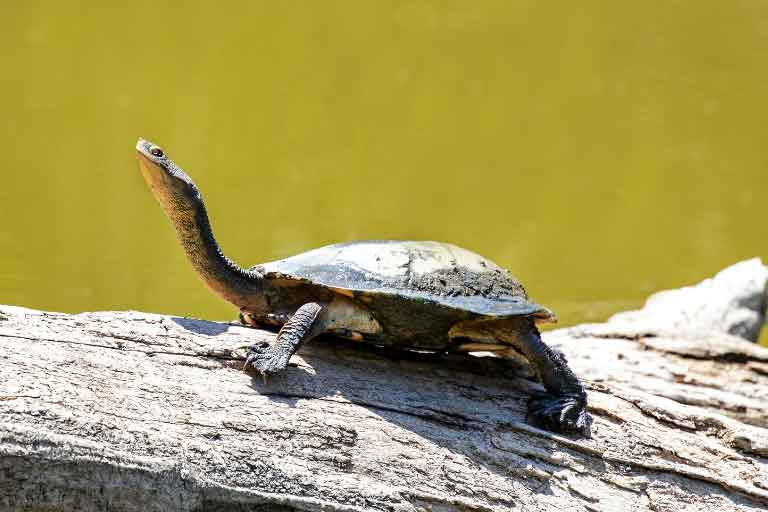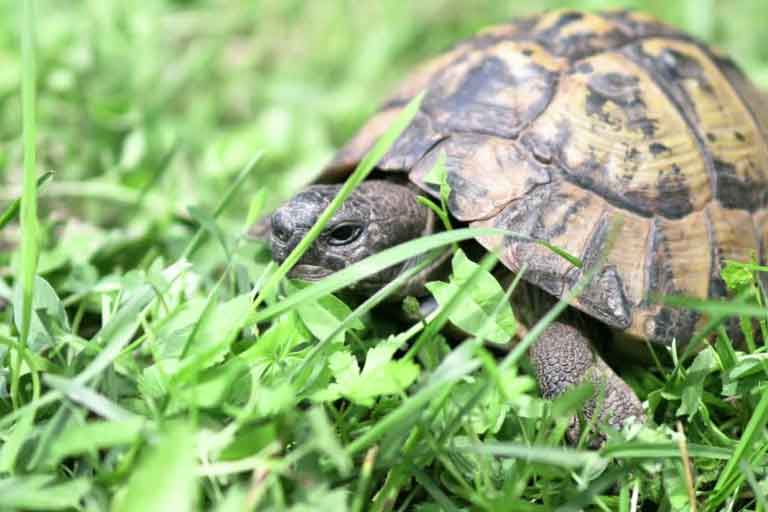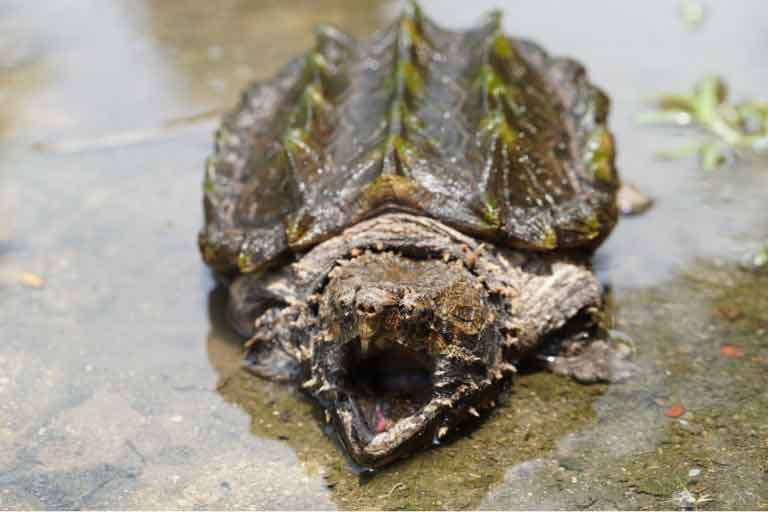Why Does My Turtle Stretch His Neck?
Hey there, turtle lovers! If you’re like me, you’ve probably spent hours watching your little shelled buddy and wondering about their quirky behaviors. One thing I’ve noticed with my own turtle is how often he stretches his neck out, sometimes looking like he’s trying to reach for the stars! It’s adorable, but it got me…
Hey there, turtle lovers! If you’re like me, you’ve probably spent hours watching your little shelled buddy and wondering about their quirky behaviors. One thing I’ve noticed with my own turtle is how often he stretches his neck out, sometimes looking like he’s trying to reach for the stars! It’s adorable, but it got me curious—why does my turtle stretch his neck? After some research and chatting with other turtle owners, I’ve learned there’s more to this behavior than meets the eye. Let’s dive into the fascinating reasons behind it and what it means for your pet.
In this post, I’ll walk you through why turtles stretch their necks, what might be prompting this behavior, and how you can make sure your turtle is happy and healthy. This is the first part of a three-part blog post, so stick with me as we explore the world of turtle neck-stretching together!
Why Do Turtles Stretch Their Necks?
Turtles stretch their necks for a variety of reasons, and it’s usually a perfectly normal part of their behavior. As a turtle owner, I’ve seen my little guy do this in different situations, and it’s often tied to their instincts or environment. Here are the main reasons why your turtle might be stretching that neck:
1. To Breathe or Regulate Oxygen
One of the first things I learned is that turtles often stretch their necks to breathe more effectively. If your turtle is in water, they might extend their neck to the surface to take a gulp of air. This is especially common for aquatic or semi-aquatic turtles like red-eared sliders or painted turtles. I’ve noticed my turtle doing this when he’s swimming around in his tank—it’s like he’s popping up for a quick breath before diving back down.
Even when they’re out of the water, stretching their neck can help them get more oxygen or regulate their breathing. It’s their way of making sure they’re getting enough air, especially if they’ve been active or the tank’s air quality isn’t ideal.
2. To Thermoregulate
Turtles are cold-blooded, which means they rely on their environment to regulate their body temperature. I’ve seen my turtle stretch his neck out while basking under his heat lamp, and it turns out this is a way for him to soak up more warmth. By extending their neck, they expose more of their skin to the heat source, helping them warm up or cool down as needed.
If your turtle is stretching their neck while basking or sitting in a sunny spot, they’re likely just trying to get comfy and maintain the perfect body temperature. It’s one of those moments where I can’t help but smile at how clever they are!
3. To Explore Their Surroundings
Turtles are curious creatures, and stretching their necks is often a way for them to check out their environment. My turtle loves to crane his neck when I rearrange his tank or add a new toy. It’s like he’s saying, “What’s going on over there?” This behavior is especially common when they’re on land or in shallow water, as it gives them a better view of what’s around them.
If your turtle is stretching their neck while looking around, they might just be satisfying their curiosity or keeping an eye out for food, predators, or anything else that catches their interest.

What Could Encourage Neck-Stretching?
Now that we know the main reasons turtles stretch their necks, let’s talk about what might be encouraging this behavior in your pet. As a turtle owner, I’ve learned that certain conditions or situations can make my turtle stretch his neck more often. Here are a few things to consider:
1. Tank Conditions
The setup of your turtle’s tank can play a big role in how often they stretch their neck. For example, if the water is too deep or the basking area is hard to reach, your turtle might stretch their neck more to breathe or get comfortable. I’ve found that keeping the water at the right depth for my turtle’s species (about 1.5 times his body length for swimming) helps him feel secure and reduces excessive neck-stretching.
Poor water quality can also make turtles stretch their necks more as they try to get fresh air. I make sure to clean my turtle’s tank regularly and use a good filter to keep the water fresh, which seems to keep him happy.
2. Hunger or Feeding Time
If your turtle is stretching their neck a lot, especially when you’re nearby, it could be a sign they’re hungry! My turtle gets super active and stretches his neck toward me when it’s close to feeding time. It’s like he’s begging for a snack. Turtles often associate their owners with food, so they might stretch their neck to get a better look at you or to reach for any treats you’re holding.
3. Stress or Discomfort
Sometimes, neck-stretching can be a sign that your turtle isn’t feeling 100%. If their tank is too small, the temperature is off, or they’re feeling stressed, they might stretch their neck more than usual. I’ve noticed my turtle doing this when I accidentally left the tank light on too long, which made him a bit restless. Keeping a consistent environment and checking for stressors (like loud noises or sudden changes) can help reduce this behavior.
That’s it for the first part of our deep dive into why turtles stretch their necks! In the next part, we’ll explore what to do if your turtle is stretching their neck too much and how to tell if it’s a sign of something more serious. Plus, I’ll share some tips on creating the perfect turtle habitat to keep those necks happy and healthy.
Is Excessive Neck-Stretching a Cause for Concern?
As a turtle owner, I’ve sometimes wondered if my turtle’s neck-stretching is just a cute quirk or something I should worry about. While it’s usually normal, excessive or unusual neck-stretching can sometimes signal that something’s off. Let’s talk about when you might need to pay closer attention and what you can do to keep your turtle comfortable.
Signs It Might Be a Problem
Most of the time, my turtle stretches his neck for the reasons we covered earlier—breathing, thermoregulating, or exploring. But if he’s doing it constantly or in a way that seems frantic, it could be a red flag. Here are a few things I’ve learned to watch for:
- Constant Neck-Stretching in Water: If your turtle is stretching their neck to the surface repeatedly or struggling to stay afloat, it might mean the water is too deep or they’re having trouble breathing. I once noticed my turtle doing this when I accidentally overfilled his tank, and adjusting the water level fixed it right away.
- Lethargy or Lack of Appetite: If your turtle is stretching their neck a lot but also seems sluggish or isn’t eating, it could be a sign of stress or illness. Respiratory infections, for example, can make turtles stretch their necks more as they try to breathe easier.
- Unusual Postures: If your turtle is stretching their neck in odd ways, like tilting their head or keeping it extended for long periods, it might indicate discomfort or a health issue.
If you notice any of these signs, it’s a good idea to check your turtle’s environment and consider a vet visit. I’ve found that catching problems early makes a big difference for my turtle’s health.
Possible Health Issues
One thing I’ve learned from other turtle owners is that excessive neck-stretching can sometimes be linked to health problems. For example, respiratory infections are common in turtles and can cause them to stretch their necks as they struggle to breathe. Symptoms like wheezing, bubbles around the nose, or swimming lopsided are clues something might be wrong. If you suspect this, I highly recommend reaching out to a reptile vet ASAP.
Another possibility is stress from an improper setup. My turtle got a bit stressed when I moved his tank to a noisier spot in the house, and I noticed more neck-stretching than usual. Making sure the tank is in a quiet, stable spot helped him relax.
How to Create the Perfect Environment for Your Turtle
To keep your turtle’s neck-stretching at a healthy level, it’s all about giving them a great home. I’ve tweaked my turtle’s setup over time, and these tips have made a big difference in keeping him happy and reducing any stress-related behaviors.
1. Optimize Tank Conditions
A well-set-up tank is key to preventing excessive neck-stretching. Here’s what I do for my turtle:
- Water Depth: Make sure the water is deep enough for swimming but shallow enough that your turtle can easily reach the surface to breathe. For my semi-aquatic turtle, I keep the water about 1.5 times his body length.
- Basking Area: Provide a dry, accessible basking spot with a heat lamp. I use a UVB lamp to mimic natural sunlight, which helps my turtle thermoregulate and stay healthy.
- Water Quality: I clean the tank weekly and use a strong filter to keep the water clear. Dirty water can irritate turtles and make them stretch their necks more to get fresh air.
2. Maintain Proper Temperatures
Since turtles rely on their environment to regulate their body temperature, I make sure the tank has the right temperature zones. The water should be around 75-80°F for most aquatic turtles, while the basking area should be warmer, around 85-90°F. I use a thermometer to check these regularly, and it’s helped my turtle stay comfortable and stretch his neck only when he needs to.
3. Minimize Stress
Turtles can get stressed by sudden changes, loud noises, or overcrowding. I try to keep my turtle’s routine consistent and avoid moving his tank too often. If you have multiple turtles, make sure the tank is big enough to avoid competition for space or food. For my single turtle, a 40-gallon tank gives him plenty of room to swim and explore.
Tips to Encourage Healthy Neck-Stretching
As a turtle owner, I love seeing my turtle stretch his neck when he’s feeling curious or comfy—it’s a sign he’s doing what turtles do best! To make sure your turtle’s neck-stretching stays healthy and normal, here are some tips I’ve picked up that have worked wonders for my shelled friend:
1. Offer a Varied Diet
A well-fed turtle is a happy turtle! I’ve noticed my turtle stretches his neck more when he’s excited about food. To keep him healthy, I feed him a balanced diet of commercial turtle pellets, leafy greens like kale, and occasional treats like shrimp or worms. Feeding him in the water encourages natural neck-stretching as he reaches for his food, mimicking how turtles hunt in the wild.
2. Enrich Their Environment
Turtles are more curious than you might think! I add floating toys, rocks, or plants to my turtle’s tank to keep him engaged. When he stretches his neck to check out a new object, it’s like he’s exploring a little turtle adventure. Just make sure any decorations are safe and won’t tip over or trap your turtle.
3. Handle with Care
I try not to handle my turtle too much, as it can stress him out and lead to more neck-stretching as he tries to figure out what’s going on. When I do need to pick him up (like for tank cleaning), I approach slowly from behind and support his body gently. This keeps him calm and reduces any frantic neck movements.
4. Regular Health Checkups
Even if your turtle seems fine, I recommend taking them to a reptile vet once a year. My vet checks for signs of respiratory issues or other problems that could cause excessive neck-stretching. Catching things early means my turtle stays happy and healthy, stretching his neck for all the right reasons.
FAQs
Here are some common questions I’ve heard from other turtle owners about neck-stretching, along with answers based on my experience and research:
1. Is Neck-Stretching Always Normal?
Most of the time, yes! Neck-stretching is a natural behavior for turtles to breathe, thermoregulate, or explore. But if it’s excessive or paired with symptoms like lethargy or wheezing, it could be a sign of stress or illness. Keep an eye on your turtle and check their tank setup if you’re worried.
2. Can a Small Tank Cause More Neck-Stretching?
Absolutely. If the tank is too small or the water is too deep, your turtle might stretch their neck more to breathe or get comfortable. I found that upgrading to a 40-gallon tank for my turtle gave him enough space to swim and bask without overdoing the neck-stretching.
3. How Do I Know If My Turtle Is Stressed?
Signs of stress include excessive neck-stretching, hiding a lot, refusing food, or aggressive behavior. If my turtle starts acting off, I double-check the tank’s temperature, water quality, and noise levels to make sure he’s in a calm environment.
Final Words
Watching my turtle stretch his neck is one of those little joys of being a turtle owner—it’s like he’s showing off his personality! Whether he’s reaching for air, soaking up heat, or just being nosy, neck-stretching is usually a sign your turtle is doing what comes naturally. By keeping their tank clean, providing a balanced diet, and minimizing stress, you can ensure your turtle’s neck-stretching stays healthy and normal.
If you notice your turtle stretching their neck a lot or acting unusual, don’t panic—just check their environment and consider a vet visit if needed. I hope this guide helps you understand your turtle’s quirky behavior and keeps your shelled buddy thriving. Let me know in the comments if you’ve seen your turtle do some epic neck stretches or if you have any other questions about turtle care!







